5 Reasons For Rhubarb Flowers & Why You Should Cut Them Off As Soon As They Appear
Flowers aren't usually the first image that comes to mind when you think of the spring plant, but rhubarb flowers. Find out why—and why to cut them off quick!
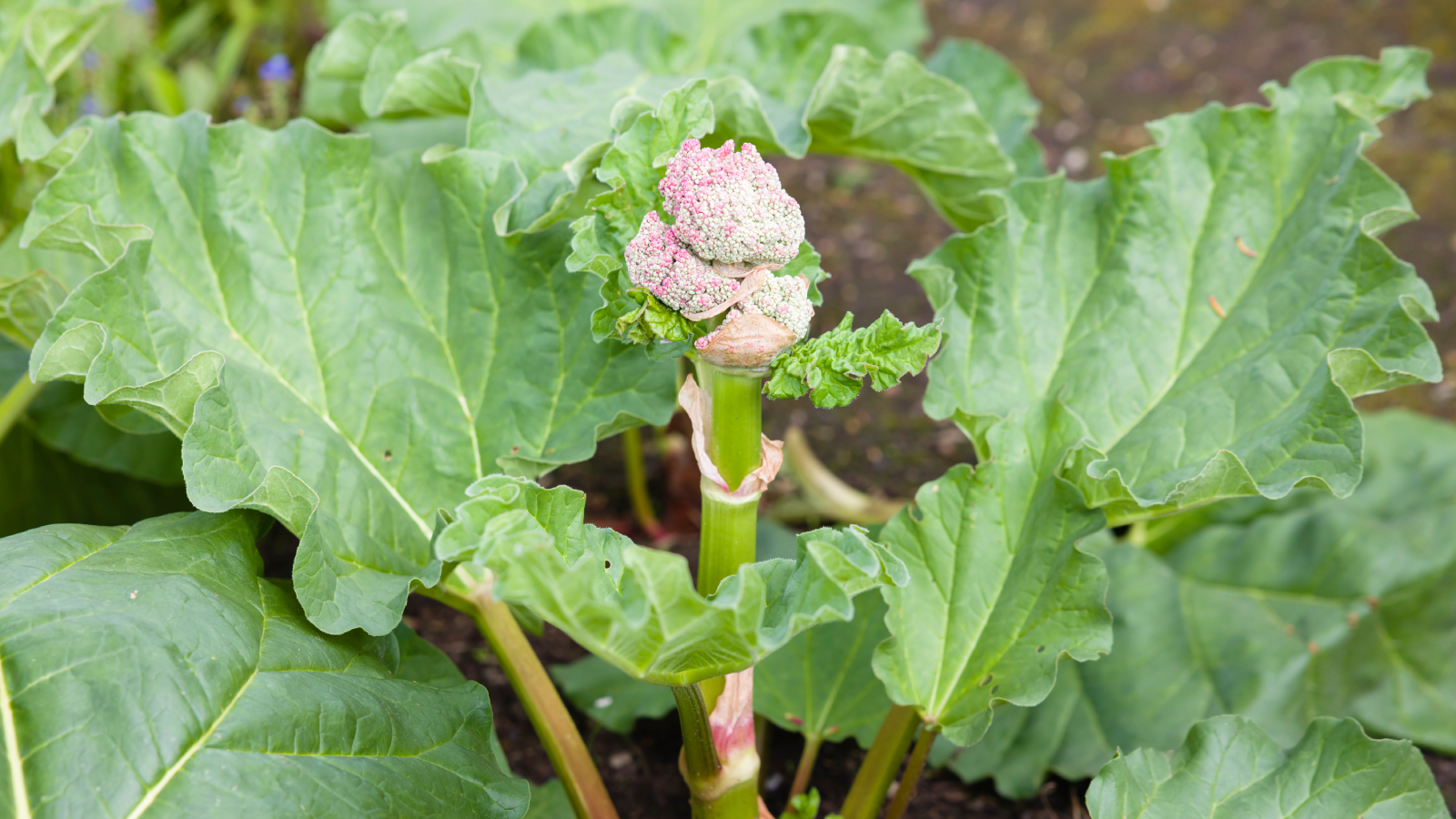

Heather Rhoades
Many gardeners await the arrival of the recognizable red stalks of their rhubarb plant each spring. But the sight of a rhubarb flower may give even the experienced home grower pause.
If you’ve ever encountered a flower when growing rhubarb in the garden, your first question was likely, "Why is my rhubarb flowering?" We’ll take a look at some of the most common reasons why and what to do, as well as dig into the important question, "Should I let my rhubarb flower?"
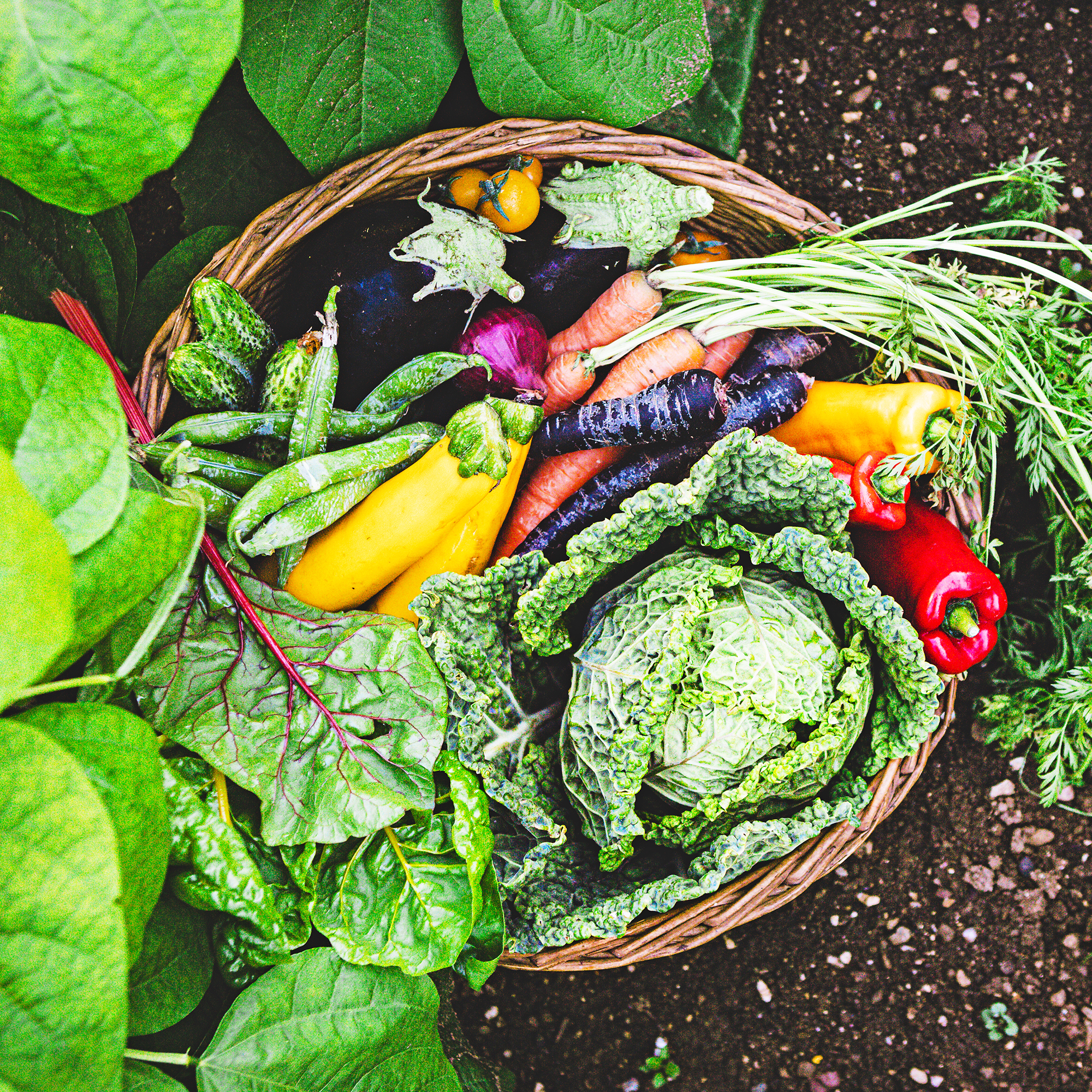
Expand your edible garden with expert-curated seeds that taste good and are good for you! Shop the complete collection of non-GMO seeds and start growing your most delicious garden ever.
What Do Rhubarb Flowers Look Like?
If you find your rhubarb flowering, it’s a bold sight. These spring garden classics are pretty edible plants that add interest to flower beds, as well as delicious tart flavor to both sweet and savory dishes. Rhubarb plant flowers appear in spring once the plant reaches maturity. They appear at the top of long stalks that are longer than the edible stalks and resemble pink-tinged, malformed cauliflowers.
As the flower clusters develop, they grow into large cream-colored panicles that resemble oversized astilbe flowers. Though quite eye-catching, if you’re growing and harvesting rhubarb to eat, it’s best to remove the flower so the plant focuses its energy on plumping up the edible stems.
When a rhubarb plant flowers, it’s known as bolting. Bolting occurs in many plants, such as those in the mustard family or leafy greens like spinach. Cilantro bolting is another common issue in the edible garden.
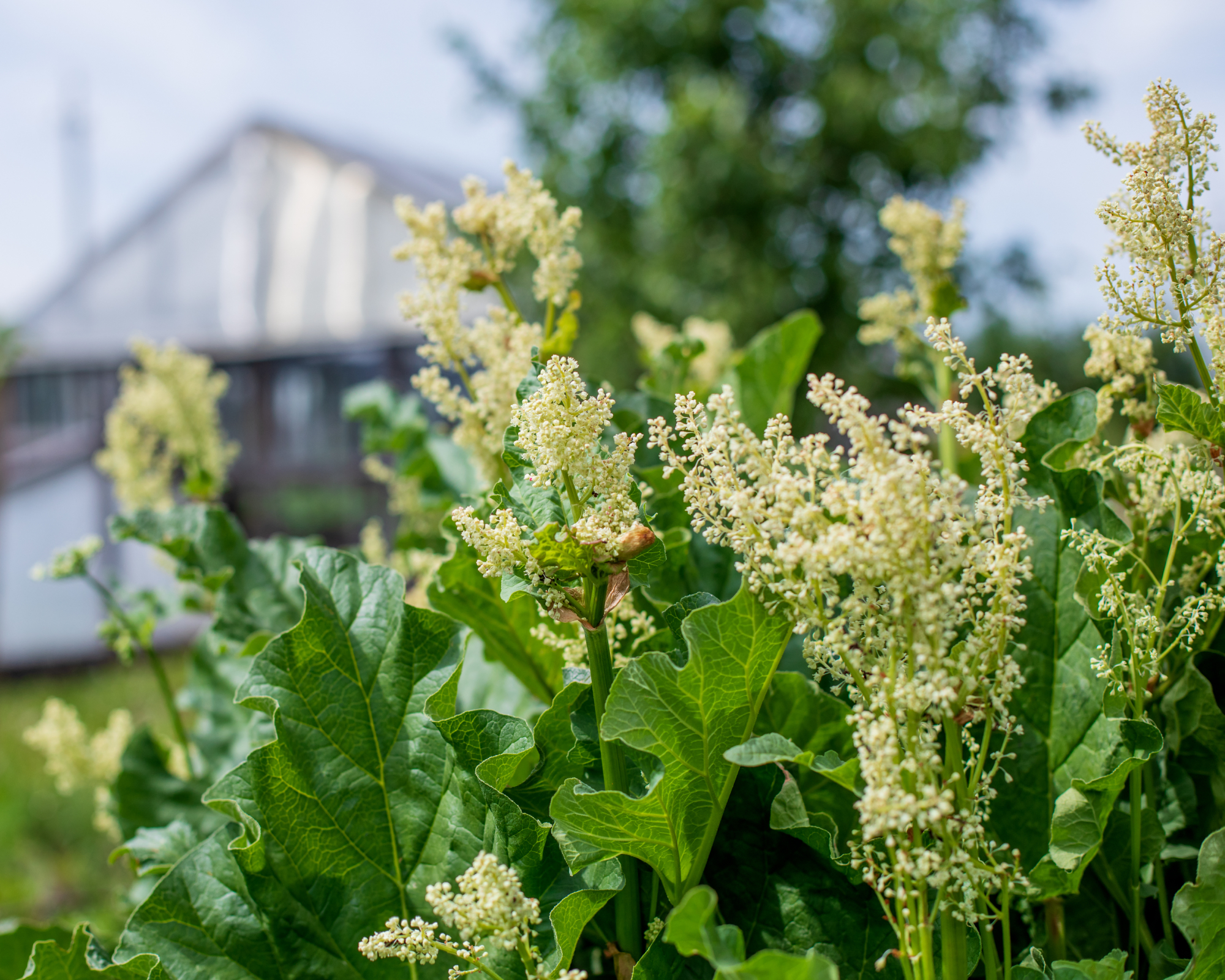
Why Is My Rhubarb Flowering?
Flowers are a normal part of the plant life cycle. They signal a plant’s attempt to reproduce, since the flowers bear seeds. But bolting can also indicate potential problems.
It’s important to figure out why your rhubarb is flowering to make sure it’s healthy and will continue to give you a tasty spring harvest each year. Here are some of the most common reasons why rhubarb flowers:
Gardening tips, videos, info and more delivered right to your inbox!
Sign up for the Gardening Know How newsletter today and receive a free copy of our e-book "How to Grow Delicious Tomatoes".
Reason #1: It's Old
Plants need to reach a certain maturity in order to reproduce through seed. For a rhubarb plant, that maturity comes a few years after it is planted. The older a rhubarb plant is the more likely the rhubarb will flower and go to seed.
Rhubarb plants can live 10 to 20 years, producing those deliciously tart stems perfect for stewing, pies, and preserves for many springs. Mature rhubarb plants flowering and going to seed is a normal part of the plant’s life cycle.
In many cases, older plants simply need to be rejuvenated by division in order to prevent flowering. Rhubarb performs best when divided every 5 to 10 years. If you have a younger rhubarb plant that’s flowering, though, this is sometimes a sign of an environmental or cultural problem.
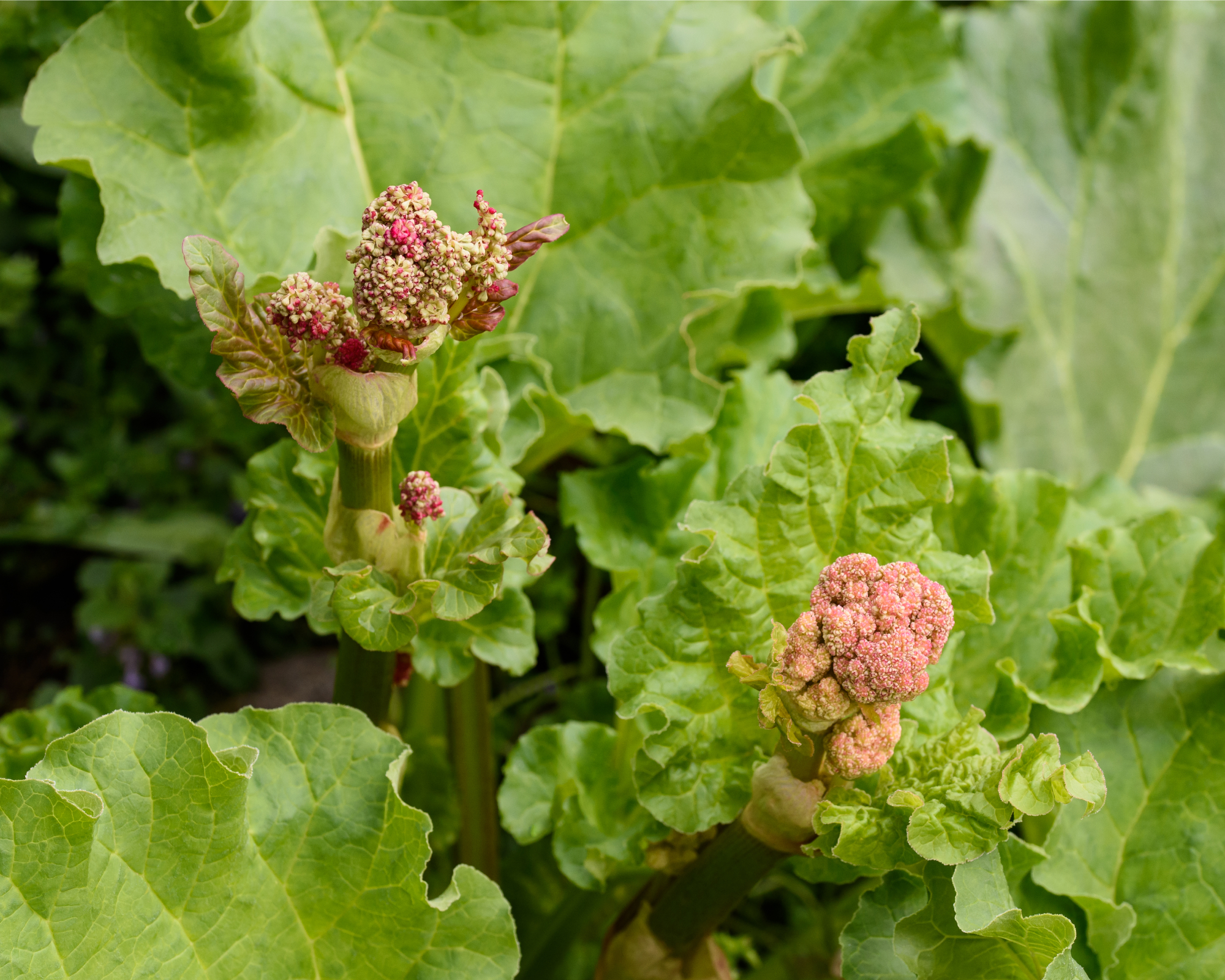
Reason #2: It’s the Wrong Variety
Some varieties of rhubarb flower more than others. Heirloom varieties like 'MacDonald' and 'Victoria' produce lots of seed stalks, while more modern varieties like 'Valentine' and 'Canada Red' are less likely to flower.
If the variety of rhubarb in your garden has a tendency to flower, consider replacing it with one that is slow to bolt like 'Ruby Queen' or one of the following varieties:
- 'Sutton'
- 'Champagne'
- 'Red Champagne'
- 'Glaskins Perpetual'
- 'Ruby Red Dwarf'
- 'Riverside Giant'
Reason #3: It’s Too Hot
Rhubarb is a spring crop that grows best in cooler temperatures. An unusually warm spring can cause a rhubarb to start flowering, or bolting.
Other than age and variety, heat is the most common reason why rhubarb bolts. Temperatures above 75 degrees Fahrenheit (24 C) can cause bolting. It is even more common when things get really hot, around 90 F (32 C).
To grow rhubarb in hot climates, keep soil cool. Lay 2 to 3 inches (5 to 7.5 cm) of organic mulch around the plant to stop soil from heating up too much. It is a good idea to cover the whole site once the plant dies back so winter temperatures don’t harm the crown. Pull mulch away again when you see the first signs of growth in early spring.
If your rhubarb is situated in a full sun location in a hot climate, dig it up and relocate it. Plant rhubarb in a spot with rich soil where it won’t get too much hot sun in the spring.

Reason #4: It’s Stressed
Stress can also force a rhubarb to flower. Stress can come in the form of a lack of water, pests, fungus, lack of nutrients, or animal damage. Anything that makes the plant feel threatened can cause it to start flowering and trying to reproduce. This is a natural evolutionary defense and way of helping a particular plant species continue.
Give your rhubarb plants everything they need to grow successfully. Water plants at the base every seven to ten days in the absence of rain. In spring, feed rhubarb with a balanced 10-10-10 granular fertilizer. Cultivate the surface of the soil around rhubarb plants to prevent competition from weeds. Keep hungry animals away with a fence and keep destructive bugs away with a natural pest repellent spray.
Reason #5: It’s Time to Divide
This one goes along with maturity, but even old rhubarb plants can be renovated by dividing them into multiple smaller plants. If your plant is past due on division, it can cause your rhubarb to flower.
Growing rhubarb from seed makes them more prone to flowering compared to vegetatively produced plants. Old rhubarb plants you have not divided in many years, often flower as it attempts to reproduce via seed.
To divide rhubarb plants, dig up the entire crown just before the plant begins to show signs of life in early spring. Cut it into sections that each have a large bud and plenty of root. Replant each new section in rich soil amended with compost.
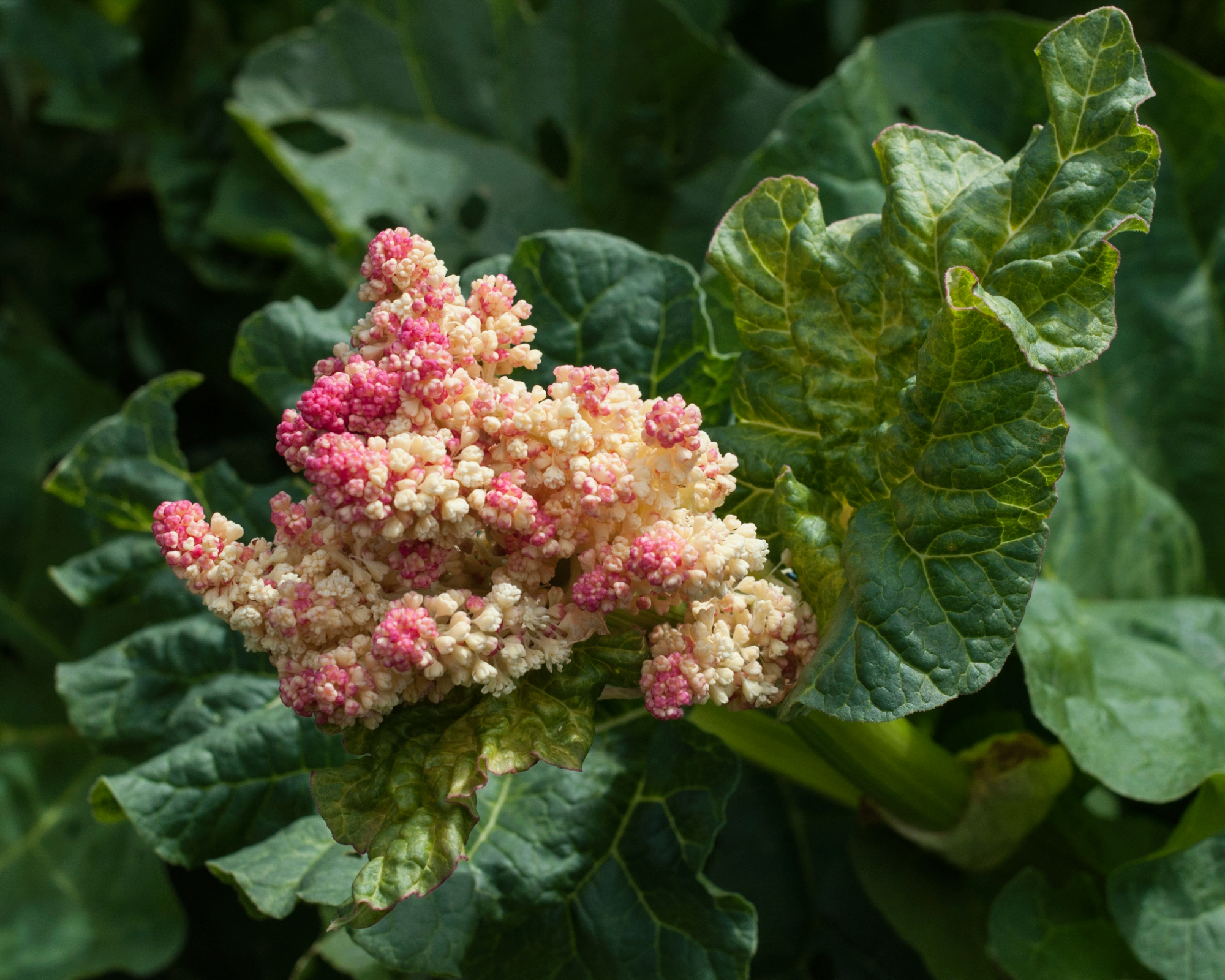
Should I Let My Rhubarb Flower?
There is no harm in letting your rhubarb flower, but keep in mind that the energy the rhubarb plant puts towards making a flower and growing seeds is energy it won’t direct towards growing leaves and stems. When the flower is allowed to persist and produce seeds, the plant wastes valuable energy on flower and seed development instead of using it to form tart, delicious stalks you can eat.
Since rhubarb is grown for the stems, most gardeners choose to remove the flowers as soon as they appear so the plant can focus its energy on leaf and stem growth. But even if your plant is flowering, you can still harvest rhubarb stems to use in cooking (the leaves are poisonous).
If you choose to remove rhubarb flowers, simply cut them off as soon as they appear.
How to Remove Rhubarb Flowers
It is a good idea to remove the flowering stalk with sharp, clean pruners or a knife all the way down to the crown. This will allow the plant to focus its energy on the growing edible stalks and healthy leaves.
A flowering rhubarb can cause a bit of alarm for a gardener, but now that you know more about why a rhubarb bolts and how to prevent or fix it when it happens, there's nothing to worry about. You can still enjoy the wonderful taste of rhubarb grown fresh in your garden.
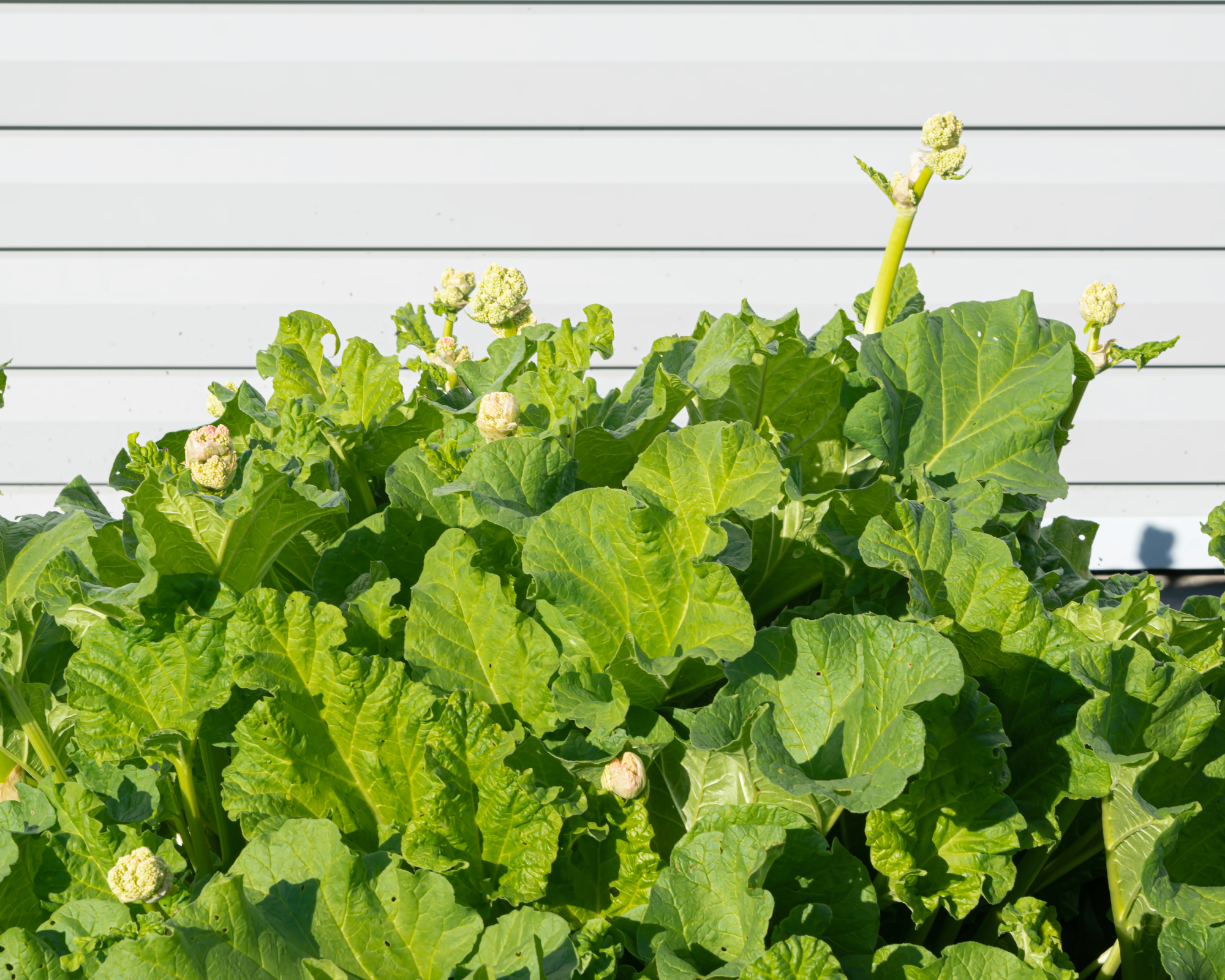
Frequently Asked Questions
Is rhubarb still good after it flowers?
While some plants are not tasty after bolting, like spinach which gets bitter, rhubarb stalks are not affected by flowering. It is perfectly safe to harvest the stalks even with a flower blooming. However, if you remove the flower stalk, the plant will produce more and larger edible stalks.
Is flowering rhubarb poisonous?
The tiny flowers are not toxic, although they are very sour and the texture is unpleasant. The flower stalk, however, is toxic. The leaves of rhubarb plants are also poisonous. They contain high amounts of oxalic acid which cause cramps, nausea, kidney stones, and in some cases, death.
The English in the 17th century were the first people known to eat rhubarb, but they used the leaves to ill effect. It wasn’t until a century had gone by that the stalks were pinpointed as the edible part of the plant. The leaf stems, or petioles, are safe to eat both raw or cooked.
Where do you cut off rhubarb flowers?
Feel all the way down to about an inch ( 2.5 cm) above the crown and remove the flower stalk at that point.
Love Gardening Know How? Our latest book, The Complete Guide to Vegetable Gardening, is available now!
Perfect for the gardener in your life, or for your own coffee table, this book boasts 224 pages of high-quality pictures, expert tips, and easy-to-follow advice to get your vegetable garden growing its best. Look for it at these sellers, and wherever quality books are sold.
This article features products available from third party vendors on the Gardening Know How Shop. Keep in mind that our plant inventory is limited—so if you’re thinking of purchasing, don’t wait!

Bonnie Grant is a professional landscaper with a Certification in Urban Gardening. She has been gardening and writing for 15 years. A former professional chef, she has a passion for edible landscaping.
- Heather RhoadesFounder of Gardening Know How
-
 Looking For Plants To Give You The Soft And Fuzzies? Try These 5 Fuzzy Leaf Plant Options
Looking For Plants To Give You The Soft And Fuzzies? Try These 5 Fuzzy Leaf Plant OptionsLovers of texture, drama, silver foliage and tactile plants will adore these special sensory garden additions. These fuzzy leaf plant options will leave you all aglow
By Susan Albert
-
 Get Ready For A Summer Of Hummers! Grow These Full Sun Hummingbird Plants and Flowers
Get Ready For A Summer Of Hummers! Grow These Full Sun Hummingbird Plants and FlowersIf you’re lucky enough to enjoy a sunny backyard, make sure you are maxing out on your pollinator opportunities and grow these full sun hummingbird plants and flowers
By Tonya Barnett